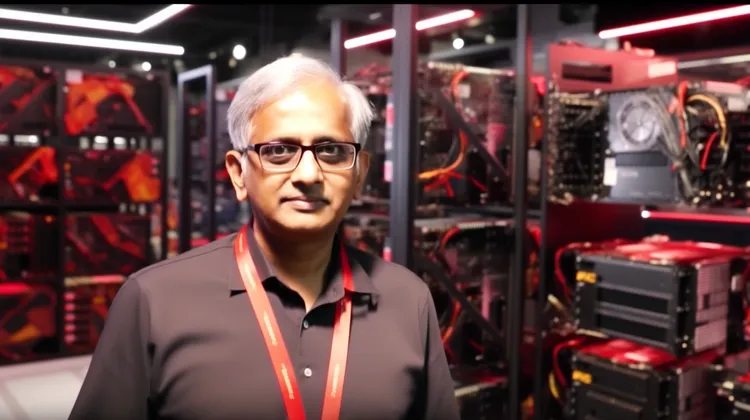AMD’s New AI Chip Challenges Nvidia’s Dominance
Over the past decade, Nvidia has enjoyed a dominant position in the artificial intelligence (AI) chip market, powering a wide range of applications from self-driving cars to deep learning algorithms. However, AMD’s recent foray into the AI chip market has sparked significant competition, challenging Nvidia’s long-standing reign.
AMD, primarily known for its processors and graphics cards, has made a strategic move into the AI chip market with the launch of its highly anticipated chip, the “Radeon Instinct MI100.” This new chip boasts impressive features and aims to rival Nvidia’s successful offerings, such as the Tesla and GeForce series.
The Radeon Instinct MI100 stands out due to its unique architecture and impressive performance capabilities. Built on the CDNA (Compute DNA) architecture, this chip is specifically designed for data center and high-performance computing environments. It offers exceptional double-precision floating-point performance, making it well-suited for scientific applications and machine learning workloads.
One of the key advantages of AMD’s MI100 chip lies in its massive compute power. With over 120 compute units, it delivers up to 11.5 TFLOPS (tera floating-point operations per second) of peak performance, significantly surpassing Nvidia’s current offerings. This increased power translates to faster AI training and inference capabilities, enabling researchers and data scientists to process massive amounts of data more efficiently.
Another noteworthy feature of the Radeon Instinct MI100 is its extensive memory bandwidth. With a staggering 1.23 TB/s of memory bandwidth, it provides faster data access and transfer rates. This can have a substantial impact on AI applications that heavily rely on large datasets, ensuring quicker data processing and reducing potential bottlenecks.
Moreover, AMD’s chip offers compatibility with leading AI frameworks, such as TensorFlow and PyTorch, ensuring seamless integration into existing AI workflows. This compatibility allows developers to leverage the full potential of these frameworks while harnessing the astounding computational power of the MI100, accelerating the development of AI models.
While Nvidia has maintained its leading position in the AI chip market for some time, AMD’s entrance presents a serious challenge. AMD’s reputation as a provider of cost-effective processors and graphics cards could work to its advantage, as it may develop high-performing AI chips at a more affordable price point, enticing customers to switch from Nvidia.
Additionally, AMD’s strategy is not solely focused on competing with Nvidia at the high-end AI market. They also plan to target entry-level and mid-range segments, making AI capabilities more accessible to a broader range of customers. By offering powerful and cost-effective solutions, AMD hopes to capture a significant market share and chip away at Nvidia’s dominance.
While the battle between AMD and Nvidia unfolds, competition in the AI chip market ultimately benefits customers and the industry as a whole. It encourages technological advancements, spurs innovation, and drives down prices, making AI-driven solutions more accessible and affordable for businesses and consumers alike.
As AMD continues to invest in AI research and development, they are poised to further disrupt the market. With their commitment to delivering high-performing and affordable solutions, Nvidia’s dominance in the AI chip market may soon face its most formidable challenge yet. Exciting times lie ahead as these two industry giants push the boundaries of AI capabilities and strive to shape the future of computing.




I highly doubt AMD’s chip can really challenge Nvidia’s dominance.
The compatibility of AMD’s MI100 chip with leading AI frameworks is a game-changer! It’s going to accelerate AI model development like never before.
Wow, this article really opened my eyes to AMD’s potential in the AI chip market! They’re giving Nvidia a run for their money.
AMD has a long way to go before they can even come close to Nvidia’s level.
I’m skeptical that AMD’s chip will deliver on its promises.
This article seems like AMD propaganda. Don’t believe the hype.
Let’s be real, Nvidia’s chips are superior in every way.